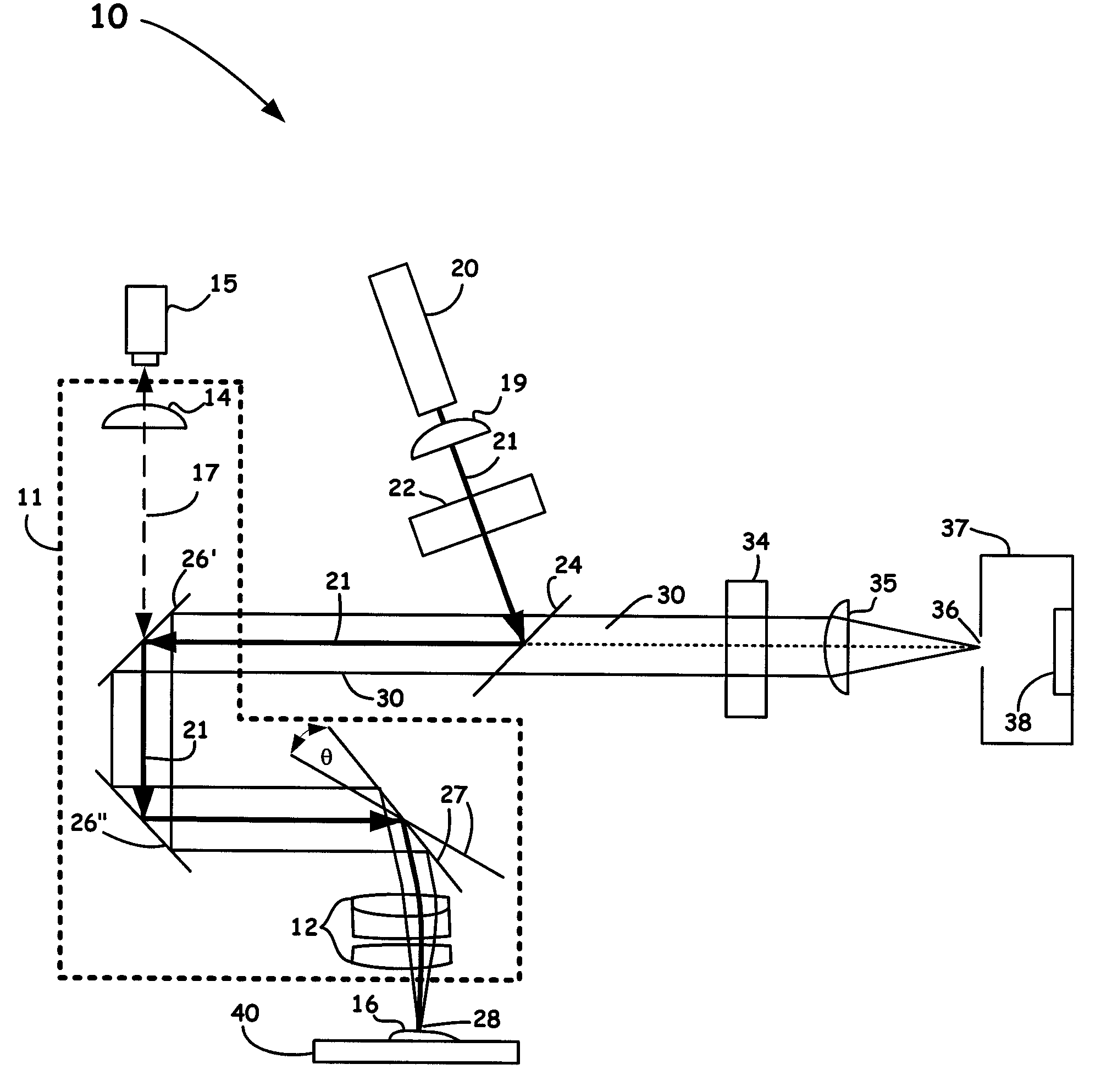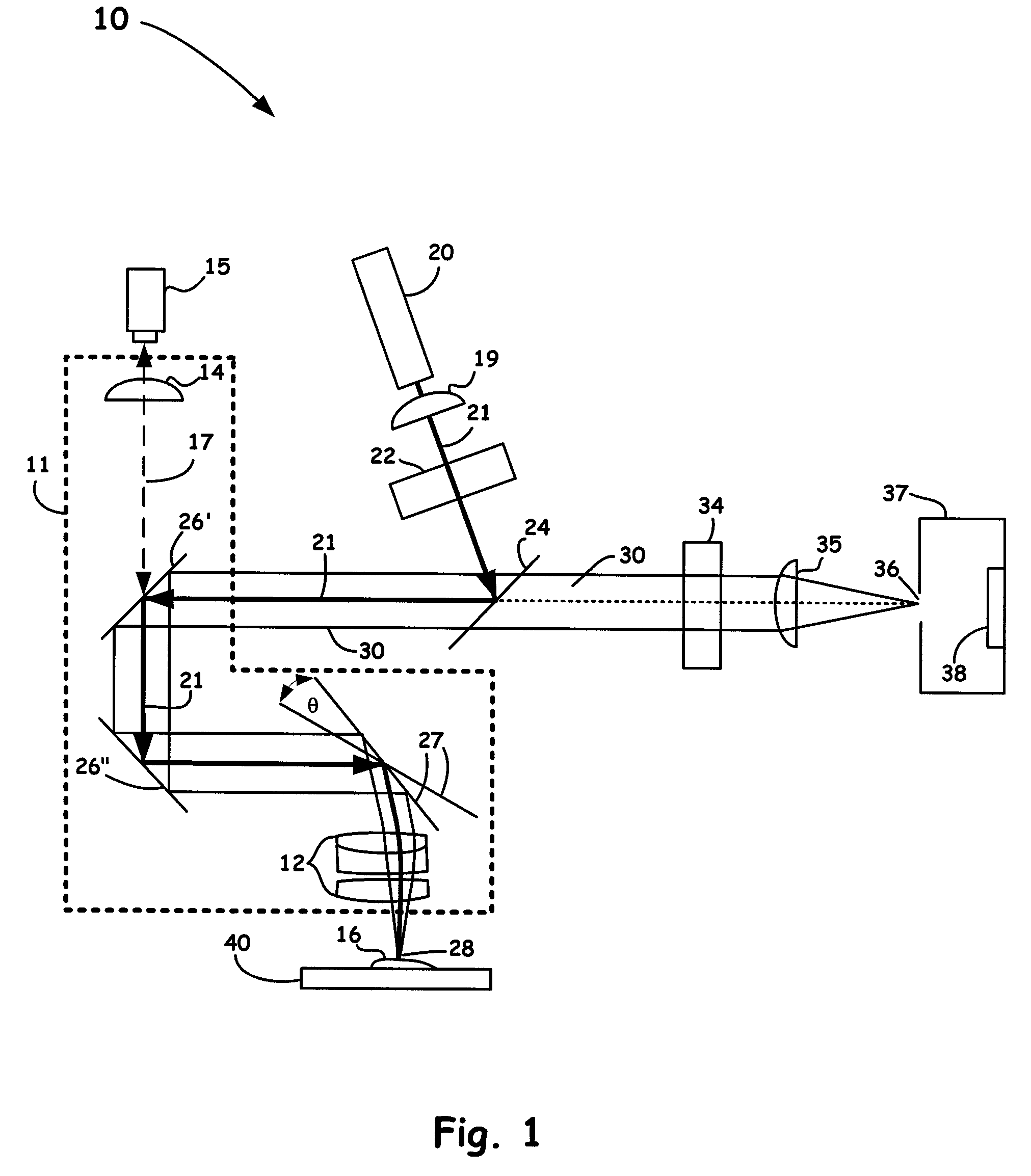Rapid spatial averaging over an extended sample in a Raman spectrometer
a raman spectrometer and spatial average technology, applied in the field of optical spectroscopy, can solve the problems of reducing the sensitivity of the instrument, the same drawback of defocusing, and the variable defocus mechanism varying the sensitivity, so as to reduce the degradation or burning of the sample, the effect of minimal loss of sensitivity and rapid spatial averaging
- Summary
- Abstract
- Description
- Claims
- Application Information
AI Technical Summary
Benefits of technology
Problems solved by technology
Method used
Image
Examples
example experimental
Results:
[0046]FIG. 3 shows example experimental Raman spectral data resulting from an interrogated orange Alka-Seltzer sample so as to demonstrate the concept of the invention. Thus, as shown in FIG. 3, the first three spectra, as denoted by the reference numerals 302, 306, and 310, are obtained by allowing the system to sit fixed at three different positions (i.e., non-scanned spectra). The second three spectra, as denoted by the reference numerals 314, 318, and 322, are obtained by scanning (using sine drive signals of about 60 Hz) the focused laser spot about a line displacement of up to about 5 mm via the moveable reflector, as shown in FIG. 2. As illustrated in FIG. 3, there are two distinct peaks of sufficient intensity at about 800 (as denoted by the reference numeral 330) and 1500 cm−1 (as denoted by the reference numeral 326) visible in the scanned spectra (i.e., the scanning test positions, 314, 318, and 322), which suggests the presence of two different compounds. However...
PUM
 Login to View More
Login to View More Abstract
Description
Claims
Application Information
 Login to View More
Login to View More - R&D
- Intellectual Property
- Life Sciences
- Materials
- Tech Scout
- Unparalleled Data Quality
- Higher Quality Content
- 60% Fewer Hallucinations
Browse by: Latest US Patents, China's latest patents, Technical Efficacy Thesaurus, Application Domain, Technology Topic, Popular Technical Reports.
© 2025 PatSnap. All rights reserved.Legal|Privacy policy|Modern Slavery Act Transparency Statement|Sitemap|About US| Contact US: help@patsnap.com



